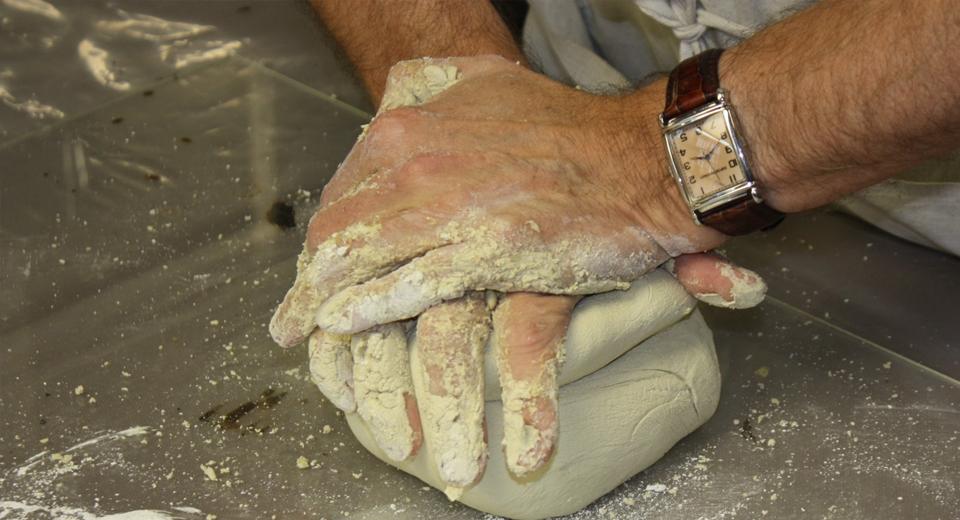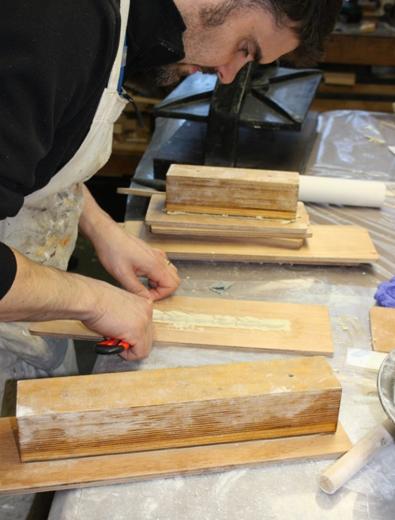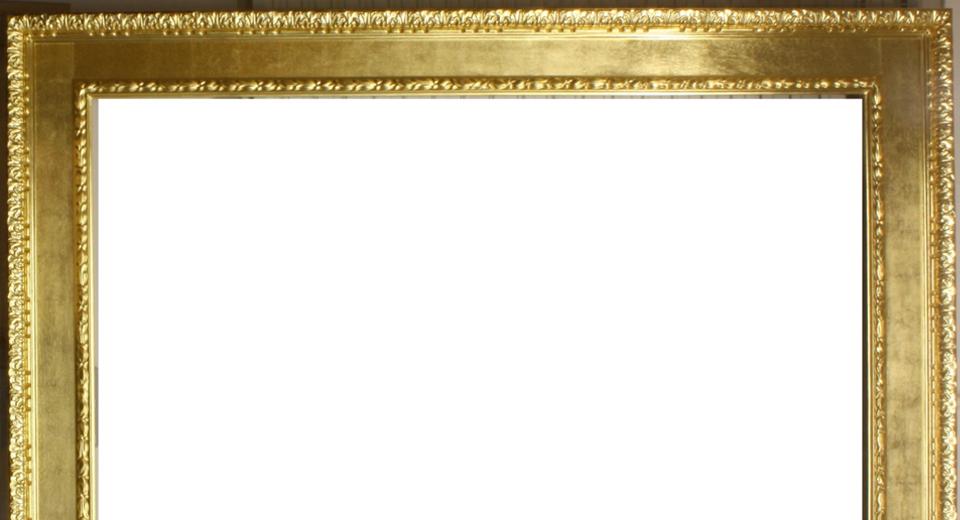
16 Dec 2015
Using a 19th century photo, our conservation team recreate the missing frame for Davy Jones’ Locker.
In the frames studio at the moment we are in the process of making a new frame for Davy Jones’ Locker by William Lionel Wyllie. The painting was painted in 1890 and was acquired with a modern, reproduction frame, totally out of keeping with the painting. We felt the painting required a frame of the right period that would suit the painting better, and luckily one of our painting curators unearthed a photo of Wyllie sitting in his studio with the painting behind him on an easel, taken by Ralph W Robinson, in the Royal Academy of Arts collection of historic photographs (here).
The frame around the painting is a Watts frame, named after the artist George Frederic Watts, a style of frame that became extremely popular in Britain during the second half of the 19th century. The frame is made up of three sections, an inner sight edge and top edge with leaf ornament in composition moulding with a wide flat frieze in between gilded oak.
We decided to make the moulding out of Jelutong, as it is a stable, lightweight wood, and use a thick veneer of oak for the frieze. Firstly we planed the timber to size before shaping the inner and outer sections on a spindle moulder to the correct profile.


Once the frame had been assembled into three separate parts, the inner and outer sections were gessoed to fill the grain and provide a smooth surface for applying the compo and gilding. The next stage was to make compo, which is a kind of putty made up from animal glue, chalk, oil and resin that can be pressed into moulds to produce the decorative ornament around the inner and outer mouldings.


Once removed from the moulds and cooled the compo moulding is then cut from the board and applied to the frame.



When all the decoration has been carefully attached to the frame it is coated with a yellow ground colour before gilding can commence. A mordant glue size is applied and left until just the right degree of tackiness is reached before the 231/2 carat gold leaf is laid on. The gold leaf has to be handled very carefully as it can blow away in the breeze. We use a special pad to cut the gold leaf which has a tiny windbreak around it to stop this from happening.


When the three sections of the frame have been gilded, they are joined together to create the finished frame. The only thing that remains to be done is to apply a toning layer to the gold until the right finish is achieved. This is a subtle process of adjusting the brightness and colour of the gold to enhance the moulded decoration and make sure that it suits the painting inside. This will be one of the final touches to the frame before the painting is fitted, ready to hang in the Queen’s house.
To keep up to date with the Queen's House refurbishment, follow us on Twitter